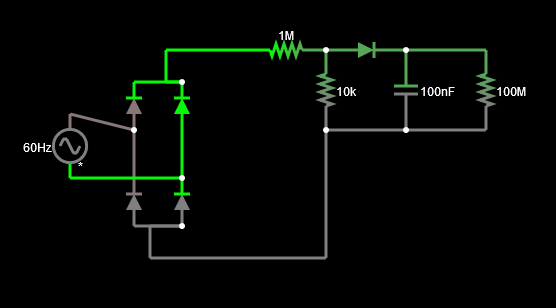I'm designing a circuit using an Arduino to measure / monitor US line voltage; single phase 120VAC (170v peak) @ 60Hz. The circuit itself is a simple full wave bridge rectifier using 1N4007s. The output is fed into a voltage divider with a 10k R1 and a 1M R2, then into one more 1N4007. There is a 100nF filter cap after the diode. I've simulated the Arduino's ADC with a 100M load.
The simulation shows the DC output across the 100M load peaking @ 1.55v after about 300ms.
This is fine if it's real, but with no real load, I would expect it to be closer to 1.68 (170 * (10k / 1010k)). Is the simulation correct? If so, what am I missing in the calculation?
Here's a link to an online simulation of the circuit: simulation
And the schematic (pardon the nonstandard rectifier layout): 
If there's a better/cheaper way to do the voltage measurement, I'm open to that too.
